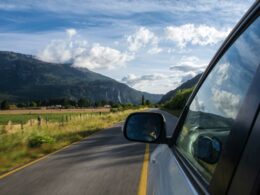The customer journey is not new! My first consulting assignment involved mapping the customer journey in a fleet management operation. I won’t mention what year that was but let’s just say the Internet just wasn’t what it is today, media was simple and data points were hard to find. As it turned out, customers journeys are complex, the initial scope of mapping the journey exploded with multiple categories, customers and use cases. What started as a small engagement to improve customer outcomes moved quickly to a significant scope and resulted in a fundamental redesign of the function. But that is another story for another day.
by Jeremy Bolt
Here we are in an age of media & marketing with the accelerating fragmentation of media, martech, privacy and measurement to mention a few; driving complexity alongside the increasing need to deliver growth and cut through in a competitive market landscape. At Hearts we call all this moving at the speed of the customer.
Why focus on the customer journey?
- According to Econsultancy “An Audience of Individuals Report” 89% of successful businesses believe anticipating customer needs and providing assistive experiences along with the customer journey are critical to growth.
- According to Salesforce research “Customer expectations hit all-time highs” 76% of consumers expect companies to understand their needs and expectations.
- In the 2021 AdNews Marketing Pulse, powered by Hearts & Science, 53% of respondents saw mapping the customer journey as either their highest or second highest priority from a marketing perspective, all respondents wanted this 100% solved in the next 24 months.
And just as many forward-thinking organisations have invested in understanding their customer journeys, along came COVID. In the last year we have probably experienced 10 years of change. Good luck using tools based on 3-year-old surveys to define your customer’s journeys. Australia has emerged from COVID but uncertainty around ongoing outbreaks, vaccine roll outs, supply chain issues driving shortages in some areas (try buying a new bike right now) and domestic border closures, openings, closures continue.
So, things have changed and continue to change alongside the significant impact caused by the pandemic. I think it’s safe to assume that the customer journey, much like the virus needs to be re-mapped as it continues to mutate. Simple things like are we WFH or not? Are we back in the office 100% or just on a Wednesday and Thursday? Will that new health regime and all the health equipment and good intentions cluttering the house continue to thrive through Winter? Should I order my new bike now and wait or buy second hand?
Two years ago, if I wanted to book a holiday, I did it 6 months in advance and could walk in a buy a new car the same day, now it seems the opposite is true. So COVID has changed the way customers behave against a backdrop of forecasted economic growth and record low unemployment. The uncertainty of how entrenched new behaviours will become and how these will continue to impact on the customer journey is unclear. So, back to basics.
4-key overarching themes of the customer journey include:
- Awareness (Priming)
- Consideration (Prompting)
- Purchase
- Post purchase
We know brands and ultimately sales and growth are built on interactions with customers as they move through the 4 above, but with the overlay of the following variables:
- The individual and their buying habits: From the detailed 90-day all in researcher to that guy who goes out on a Sunday to buy a coffee and comes home with a new car and everything in between.
- The product and category: Key drivers such as price, passion, convenience and lifestyle. Buying a car or buying toothpaste. How often do you buy a car and how often do you buy toothpaste? Hopefully the latter more frequently unless of course your mum still buys it for you.
- Product availability: This is NEW. Customers will make, or not make trade-offs based on availability, timing and price and the combined impact of these on their need state.
So, revisiting the classic customer journey approach:
- To gain advantage, it is crucial to gain insights to answer the question “Why customers choose certain ways of interacting?” (Barwitz & Maas, 2018)
- These interactions manifest as touchpoints, and we know customers behave in different ways and as humans can be irrational. You never know what to expect. Not all touchpoints are the same, some will have no impact while others may significantly shift their mindset.
- Each touchpoint will have a reaction. The bigger and more positive the reaction the better, but there also may be no-reaction or a negative reaction.
- As we accelerate into digital, customers essentially design their own customer journeys, as there are almost an infinite number of ways, they can interact during the 4 customer journey themes above.
- Touchpoints include new and existing customers across paid, owned and earned media, each acting with their own time, preferences and need states.
- The purpose of the customer journey and related touchpoints is thus to add value, and to keep the customer moving forward through the customer journey. Its also an opportunity to divert customers from your competitors as they hit a roadblock and frustration in that journey or expand their consideration sets.
The customer experience within each of these interactions drives the customer journey forward and these may be through many or few online and offline channels and touchpoints. (Rudkowski, 2018)
The customer journey of the future
Designing a highly structured customer experience can be a waste of time. Humans can be irrational, interactions fragmented, and the market cluttered with competitors trying to take your place.
Where to start? Focussing only on new media options and gaps in where media is placed or not placed is also not likely to secure long term value. Media can be an engine for growth. How do we ensure we leverage that?
Having a core framework based on the customer journey utilising relevant and detailed data, research, insights and thinking to inform your product strategy is a good start. Use both the heart and the science to develop this. Use this to inform the stages your customers do and don’t go through, their need states, demand curves. Start by mapping these with the objective of prompting, priming, converting or retaining customer actions at scale and how and where you will play with the idea that these actions are interlinked and support from top of funnel to low end of funnel. In addition, ensure brand ethics are front and centre on where it is right to engage with the audience.
This means developing a consistent approach to the customer journey so you can leverage and extrapolate the thinking across the organisation. An approach that can be brought to life, is dynamic, and which is constantly tested and updated with learnings fed back to planning and delivery teams. Understand just how and where you add value to your customers as they join and move through the customer journey. Create the preconditions which make it possible for customers to find and engage, and the experiences they desire to retain them.
Customers will evaluate their experience continuously as they move through these interactions or just pause in passive consideration. But they continually consciously and unconsciously evaluate the touchpoints. The journey must create value for the customer and thus value for the brand. This should be delivered across paid touchpoints as well as assessing owned & earned opportunities to ensure integration is what should be an end to end experience.
So, let’s talk real-life here
I recently bought and then helped a friend buy a mountain bike. Mountain bikes are 1. not cheap and 2. not what they used to be with multiple options including frame design and material, wheel size, gears, brakes and shock absorbers all driving price which for a dual suspension bike can range from $4K up to $15K and more.
I bought mine just prior to COVID. My need state started after coming off my old bike, coming to rest on my face and destroying a helmet. The bike I had was old and not capable of riding on the local track around Manly dam in Sydney which has some technical sections. It was now a safety issue and thus a priority to buy a new bike. My wife might have had a different opinion.
I researched bike brands, designs, looked at brand websites, compared models, compared pricing, asked the opinions of friends, read reviews, and watched YouTube videos which formed an initial consideration set. From there I visited bike shops. In most cases I had more knowledge of the product than the sales guy in the shop. Its also an interesting process in that some of these bikes cost more than a car but you can’t test drive/ ride them.
My decision ultimately came down to the combination of 3 factors. 1. Store location (convenience for after sales), 2. bang for buck and 3. brand perception. As you may have figured out this was a passion purchase. I am still thrilled with my purchase and constantly congratulate myself on buying such an awesome piece of equipment. I also haven’t fallen off yet, touch wood.
A good friend of mine let’s call him Andrew also decided to buy a mountain bike about 3 months after I did. He wanted to ride Manly dam, but his plan was basically to go to the nearest bike shop and buy a bike.
His first visit scared him into a 2 month delay due to too many models, too many options and the resulting complexity resulting in no decision due to overload. We were then chatting over a beer; I went through my key requirements and shared some links on WhatsApp about specs and a review. He went back to the bike shop only to find there was a 3 month wait (due to COVID). This became 6 months and then 9 months which resulted in him buying a completely different brand from a completely different shop in a completely different suburb while randomly driving past.
Andrew and my customer journeys were totally different. I did research, he didn’t. I went to the bike shop armed with knowledge to reinforce my decision and negotiated price. He went straight to the bike shop, chatted to the sales guy and tried to buy the recommended bike. His was not a passion purchase but a mechanism to spend more time with his son riding outdoors.
The trade-off between time and a proven bike moved from patience to frustration. This ultimately led to a new decision to buy a bike which was immediately available.
How did media intersect?
My customer journey was driven by information demand touchpoints, so Search featured highly. The more I searched the more personalised my ads for bike brands, bike shops and bike clothing which were either local to work and home or online. These touchpoints drove brand perception.
After reading some of the content I shared, Andrew’s journey was intersected online through some behavioural advertising touchpoints which drive mental availability of alternative brands and highlighted various need states including stock shortages and the need to get riding before summer ended. When driving past a bike shop, he recognised the brand being sold and was primed for the lower end model which met his price bracket and the sign that said, “In stock”.
The point
The point here is not that mountain bikes are a complex and expensive investment (although they are). Nor is the point that we took fundamentally different journeys to get to a similar outcome being riding bikes with dual suspension down steep hills.
The point is that our online behaviours indicated we were part of a customer journey, we had intent. Media touchpoints intersected with those individual journeys and influenced our respective outcomes. My journey was thorough and took three weeks and while Andrew’s journey was more fragmented, seemed spur of the moment it did in fact take 8 months.
You need both heart and science
As Hearts, the proposition is the customer journey as a framework for media-based decision making and growth driven by what we call “journey hacking”. We understand media budgets are not infinite, so being innovative whether it be around brand or performance is key, hacking the customer to create preconditions for customers and potential customers to prime them, prompt them, convert them and ultimately retain them through media touchpoints to drive mutual value.
 Jeremy Bolt is CEO at Hearts & Science Australia
Jeremy Bolt is CEO at Hearts & Science Australia
This article originally appeared in AdNews. Photo by HUST WILSON on Unsplash.













Really great article. As a content writer at LeadsRx, a multi-touch attribution software provider, we’re all about the customer journey and identifying paths to purchase. That knowledge is powerful, and will remain so even as third-party cookies go the way of the Dodo bird.
Really great article. As a content writer at LeadsRx, a multi-touch attribution software provider, we’re all about the customer journey and identifying paths to purchase. That knowledge is powerful, and will remain so even as third-party cookies go the way of the Dodo bird.